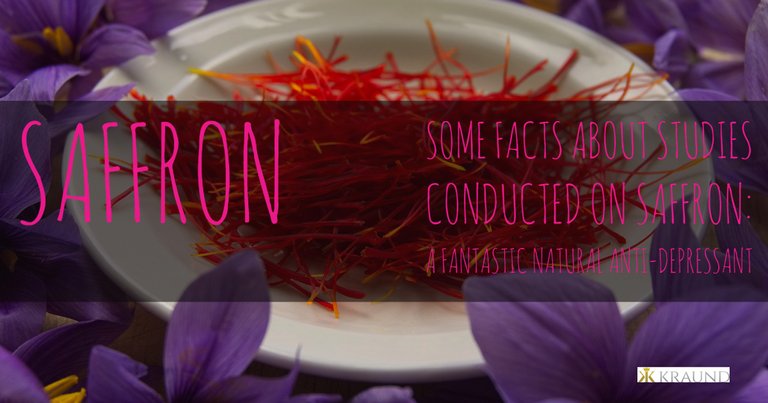
Studies have been conducted on saffron (Crocus sativus L.) for mood support. Several studies indicate that the saffron plant (the top of the plant where the pollen is, which is technically called the ‘saffron’) and the petal of the Crocus sativus L. plant both have similar mood benefits. Animal studies show the compounds safranal and crocin in the crocus plant may exert anti-depressant effects by keeping balanced levels of dopamine, norepinephrine, and serotonin according to research into the ‘Antidepressant effect of Crocus sativus L stigma extracts and their constituents, crocin and safranal, in mice’ conducted by Hosseinzadeh et al. in 2004.
Furthermore, studies in humans show there is a benefit to both anxiety and depression. An 8-week double-blind, randomised Iranian trial of 40 depressed adult outpatients was conducted. The outpatients were randomly assigned to receive either a 15mg capsule of the petal of the Crocus plant in the morning and the evening or 10mg Fluoxetine (Prozac) in the morning and evening, for eight weeks. The researchers found that the petal of the Crocus was as effective as the drug. Fluoxetine (Prozac) had an 85% response rate with 17 of 20 patients and crocus showed a similar 75%, as observed by Basti et al. in the 2007 article entitled ‘Comparison of petal of Crocus sativus L. and fluoxetine in the treatment of depressed outpatients: A pilot double-blind randomized trial.’
The FDA hasn't assessed the statements. The information is provided for informational purposes only. It's not intended to substitute medical advice or diagnosis by your doctor or other medical professionals. These herbs and products aren't meant to diagnose, treat, prevent or cure any illness. Please always consult your healthcare professional.
Hi! I am a robot. I just upvoted you! I found similar content that readers might be interested in:
https://www.sciencedirect.com/science/article/pii/S0278584606004040
Yes, I am referring to this article and have also mentioned it.